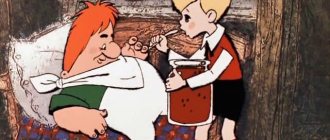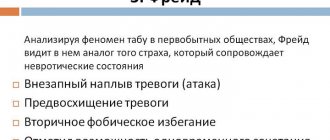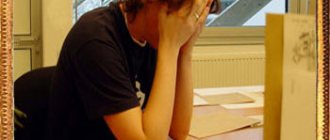The period of adolescence is a very important and responsible stage in the development of personality. In developmental psychology, the period between 11 and 16 years of life is defined as transitional from childhood to adulthood and is associated with serious psychological restructuring. The teenager is influenced by new stress factors (puberty, increasing level of social demands). Adaptation mechanisms formed at an earlier age stop working. Anxiety levels are rising. Various fears and phobias develop.
What are the fears of teenagers?
Psychologists divide all fears into three groups:
- biological (fear of pain, dangerous predators, natural disasters);
- social (fear of evaluation, failure, fear of not being accepted in the group);
- existential (fear of aging, death, isolation, freedom).
Each age period has its own set of fears. By the age of 11–13, children experience a decrease in the severity of biological fears and an increase in social and existential ones. This trend is one of the signs of the formation of self-awareness in adolescents.
Diagnostic methods
Most people have a predisposition to serious mental disorders. Typically, such conditions are caused by events that occurred in childhood. All negative information was automatically stored in people's memory. In the process of growing up, such situations developed against the background of certain fears and phobias. They are far from reality and are in the incomprehensible world of man.
An imaginary fear can arise at the genetic level or as a result of regular parental anxiety. Patients in such situations must cope independently. However, some individuals cannot eliminate this disease on their own. In such situations, the help of a psychologist or psychotherapist is necessary.
In the field of psychiatry, unreasonable fears are classified as phobias. They are a serious pathology that occurs against the background of negative thoughts or obsessive states. Such fears are beyond human control. It is impossible to get rid of these phenomena on your own. From a medical point of view, phobias are not considered a disease. Basically, they do not interfere with a person’s full life. However, in some cases, the fear is so serious that a person simply needs qualified help.
In case of severe attacks of the disease, the doctor will use exclusively psychotherapeutic methods . Diagnosis begins with the patient’s memories of his fears. The specialist will determine the cause of panic. In some situations, the doctor uses hypnosis. This method allows you to block fears on a psychological level and relieves patients from obsessive fear.
Social fears
During adolescence, the formation of a system of social relations occurs. Through friendship with peers, which becomes one of the most significant values, the child learns the rules of cooperation. Skills are acquired for establishing relationships and fulfilling social roles in adulthood.
The teenager’s sensitivity to reactions to him from strangers increases. There is a fear of being criticized because of appearance, lack of abilities and skills. From this arises constant alertness, suspicion when interacting with other people, and the desire to avoid certain situations. A defeatist sense of self can become fixed in the form of stuttering. Sometimes anxiety in social situations takes the form of aggressive, bullying behavior.
Physiological changes that occur during puberty increase social fears. A teenager may begin to experience fear of the opposite sex, fear of showing his inadequacy during sexual intercourse. Fear of sexual intercourse can arise not only due to a lack of experience, but also due to the need to be naked and demonstrate one’s imperfect body. It is during adolescence that body dysmorphia usually develops - a disorder in which a person is overly preoccupied with an imaginary or minor defect in his appearance.
The process of puberty and awakening sexuality also contributes to the development of specific phobias:
- fear of negative consequences of masturbation;
- fear of being homosexual;
- erotophobia.
Young girls may develop menophobia - fear of menstruation and associated pain, smells, and awkward situations. The fear of possible pregnancy can worry not only girls, but also boys who are beginning to become sexually active.
Reasons for the development of social anxiety
The reasons why irrational fear takes inappropriate forms are not fully understood. According to the observations of scientists, most members of society develop social phobias in childhood due to violence and improper upbringing. A child who is instilled with a sense of shame for pranks experiences a lack of basic security throughout the rest of his life.
Society also makes its demands on a person. The evaluation of behavior depends on the attributes of social prestige that members of society possess to varying degrees. What is forgiven to an official or an oligarch can negatively characterize an ordinary person. This creates the prerequisites for the development of social phobia among large sections of the population.
The causes of social phobia can be differentiated as follows:
- genetic predisposition;
- enhanced child care;
- frequent criticism, punishment of children, comparing them with peers;
- exaggeration of the influence of children's actions on the life of society;
- rejection of the child by the team;
- psychological trauma associated with humiliation;
- misconception of oneself as a person;
- negative experiences of others.
Fear of death in teenagers
The fear of death first appears at 3–5 years of age as a symptom of awakening self-awareness. In adolescence, the ability to operate with abstract concepts is finally formed, and the logic of an adult is formed. Explanations about the phenomenon of death received in childhood no longer satisfy the teenager. He is fully aware of the inevitability of the prospect of one day dying, disappearing.
Fear of death can manifest itself in increased interest in this topic, wearing clothes and accessories with appropriate symbols (skulls, crosses). A child can fight anxiety by mocking death, challenging it. Hence the love for horror films, the passion for computer games with an abundance of cruelty, and the craving for extreme entertainment. Recklessly risking his life and health, the child tries to achieve a feeling of superiority over death, to regain a sense of control.
Fears of adolescents and their conditioning by anxiety, neuroticism and aggressivenessShkuratova I.P., Ermak V.V.
Published in the collection: “Applied psychology: achievements and prospects.” Rostov-on-Don, Foliot, 2004, p.283-299.
Humanity, having entered the third millennium, along with unprecedented achievements in the field of technological progress, has acquired new sources of fear for its existence. If the last century passed under the threat of nuclear war, which was still hypothetical, then the fear of terrorism, AIDS and other new diseases has a very real basis. Not a single person, regardless of age and social status, is immune from becoming a victim of another terrorist attack that occurs on the planet almost every day.
In our country, these anxieties are supplemented by fears associated with the economic insecurity of the majority of the population, as well as with the criminal situation in the country. Children and adolescents, due to their emotional sensitivity, experience all these fears with particular force, which, superimposed on traditional childhood phobias, can lead to serious disturbances in their emotional sphere, including neurotic disorders. In this regard, the study of children's and adolescent fears, as well as personal factors that predispose to them, seems to us to be an urgent and practically significant psychological problem. Fears have long been the object of psychological research. Fear is most often defined as an emotional state that occurs in the presence or anticipation of a dangerous or harmful stimulus (3).
K. Izard noted that fear is experienced as an anxious presentiment, anxiety, and apprehension. A person has a feeling that the situation is no longer under control, he experiences more and more uncertainty about his own well-being, fear is experienced as a feeling of absolute insecurity and uncertainty about his own safety (6). In his opinion, the causes of fear can be divided into four classes: a ) external events or processes, b) drives and needs, c) emotions, d) cognitive processes of the subject. Fears belonging to each of these classes can be congenital or acquired (6).
In his work on the psychopathology of neuroses, A. Kempinski describes four types of fear: biological, social, moral and disintegration (9). Biological fear is associated with a threat to one's own life or the life of a species. Public fear arises when contacts in the social sphere are disrupted. Moral fear arises when an individual does not accept the norms offered by others as guidelines for his own behavior. Disintegration fear appears with every change in the structure of information metabolism.
A.I. Zakharov contrasts situational and personally conditioned fears. In his opinion, situational fear arises in a dangerous or shocking environment, and personality-based fear is predetermined by a person’s character, for example, his anxiety. Situational fears are real and acute, while personal fears are imaginary and chronic (4).
T.V. Abakumova offers several criteria for classifying fears: a) objective sources of fear (biological, man-made, planetary and cosmic fears); b) lack of ideas about the completeness and integrity of the surrounding reality (social and children's fears); c) ontological (religious, existential, fear of death); d) epistemological (fears from excess information) (1).
Many fears remain strong and can manifest themselves throughout a person’s life, from infancy to old age. At the same time, each age stage of development has its own specific experience and manifestation of fears. Studies by various authors have identified a number of fears typical of childhood and adolescence, although they are determined by cultural and national factors.
In children under 5-7 years of age, the most common fears are the dark, imaginary creatures, evil fairy tale characters, and animals. For younger schoolchildren, the fear of punishment and reproach from adults, the fear of strangers, death, and illness come to the fore. Teenagers are most afraid of ridicule, their own failures, illness and death of parents or loved ones (3). In the works of A.I. Zakharov (4, 5) indicates that in older preschool age children are especially sensitive to the threat of illness, misfortune, and death. Fear of death appears as an affectively sharpened expression of the instinct of self-preservation.
Research by A.I. Zakharov show that at primary school age, fear associated with school was most pronounced, and it was concretized mainly in the fear of being late for school, which was most typical for girls (5). During the same period, magical fears, fear of misfortune, and misfortune turned out to be expressed. In adolescence, all girls participating in the survey showed a fear of the death of their parents. By the age of 15, interpersonal and other social fears reach their greatest peak, such as fear of loneliness, fear of doing something wrong, of certain people, ridicule, condemnation from peers and adults, fear of not being able to cope with the assigned task (5).
In a dissertation study of the fears of junior schoolchildren, L.S. Hakobyan shows that children, when describing fears in the spatio-temporal dimension, consider the street to be the most dangerous place, and the house to be the safest. In the time dimension, fear of animals prevailed in the past; in the present, educational fears prevailed (3).
In a large study conducted by A.M. Parishioners devoted to studying the content of schoolchildren's fears obtained interesting results related to the dynamics of fear (13). At the first stage of the study (from 1979 to 1982), all schoolchildren, regardless of gender, had fears focused on school problems among elementary school students, on relationships with peers among adolescents, and on problems associated with relationships with adults and fear of personal failure among high school students. . At the second stage of the study (from 1989 to 1992), gender differences were revealed at almost all ages. For girls of all ages, family problems were the top priority: fears of death, illness, negative experiences of parents. In boys during this period, the fear of global catastrophes prevailed; in adolescence, the fear of physical violence was especially high. At the third stage of the study (from 1996 to 1997), the severity of “archaic” and “magical” fears among schoolchildren increased. The fear of physical violence has acquired both a social and vital character (13).
An analysis of studies of childhood and adolescent fears allows us to conclude that the bulk of the fears experienced are formed in childhood, but at the same time, each age stage of development is characterized by the manifestation of certain types of fear.
One of the areas of studying fears is the study of personal and situational factors that determine their occurrence. Anxiety, neuroticism and aggressiveness are most often considered as personal determinants of fear.
The concepts of anxiety and fear have not been differentiated for a long time. According to A.M. Prikhozhan, S. Kierkegaard was the first to distinguish between them at the beginning of the 19th century, who understood fear as the fear of something specific, and associated anxiety with an indefinite, unaccountable fear-longing (13). In turn, many authors distinguish anxiety as an emotional state from anxiety as a stable personal property.
In his works, S. Freud distinguished between two types of anxiety: objective and neurotic (16). Objective anxiety is, in fact, synonymous with fear. It arises when there is a real situation of danger for an individual in the outside world. This situation is perceived by him as threatening, and the perception of danger gives rise to an emotional reaction proportional to the intensity of the external danger. Neurotic anxiety differs from objective anxiety in that the source of danger is located in the internal rather than in the external world. The source of this anxiety, from his point of view, is sexual and aggressive drives that were suppressed in childhood (16).
Ch. Spielberger separates anxiety as a state and anxiety as a personality trait. He believes that anxiety is an unpleasant emotional state or internal condition, which is characterized by subjective feelings of tension, anxiety, and gloomy forebodings. A state of anxiety occurs when an individual perceives a certain stimulus or situation as containing actual or potential elements of danger, threat, or harm. Anxiety as a property is a relatively stable personality characteristic. It does not manifest itself directly in every act of behavior, but its level can be determined by how often and how intensely an individual experiences anxiety states. A person with severe anxiety tends to perceive the world around him as containing threat and danger to a much greater extent than a person with a low level of anxiety (15).
In the works of V.S. Merlin considers anxiety as one of the properties of temperament. The author understands anxiety as a person’s tendency to experience a variety of situations as threatening him in some way and at the same time to experience vague fear and anxiety directed at some object or phenomenon (11).
All authors are inclined to believe that there is a positive relationship between the tendency to experience fears and anxiety, but it is not always possible to predict the likelihood of the emotion of fear in a specific life situation based on knowledge of a person’s anxiety level in a specific life situation, since other personal and situational determinants also play a large role here. .
Neuroticism, considered by G. Eysenck as one of the most important determinants of human behavior, is also one of the personality traits associated with a tendency to perceive a situation as threatening. A high level of neuroticism is characterized by emotional instability, anxiety, low self-esteem, and autonomic disorders, so it can also be a predictor of fear (2).
The relationship between aggressiveness and fear is more complex. Firstly, they consist in a relationship of mutual determination, i.e. Aggression can cause different forms of fear, and fear can provoke aggressive behavior. Secondly, there are different forms of aggressiveness associated with the formation of fears by various psychological mechanisms. A. Bass, together with A. Darkey, identifies several types of reactions that characterize the manifestation of aggressiveness and hostility (14). Physical aggression is the use of physical force against another person. Indirect aggression is not explicit, directed in a roundabout way at another person. Irritation is a readiness to express negative feelings with little arousal. Negativism is an oppositional behavior from passive resistance to active struggle against established rules and customs. Resentment is envy and hatred of others for real or fictitious actions. Suspicion is a wary attitude towards others, ranging from mistrust and caution to the belief that they are planning and causing harm. Verbal aggression is the expression of negative feelings both through form (screaming) and through the content of verbal responses (curses, threats). The feeling of guilt expresses the subject’s conviction that he is a bad person, that he causes evil, and therefore the person is troubled by remorse.
K. Izard and other emotion researchers note the existence of connections between anger and fear (6). According to Ya.Yu Kopeiko, the connection between aggressive behavior and the level of anxiety in men is positive, and in women it is negative. The author explains this by the fact that the aggressive behavior of men is more direct in nature and is caused by the controlling function of the superego. In women, aggressive behavior is some defense mechanism more related to ego strength-weakness (7).
A. Kempinski believes that sometimes anxiety is concentrated on some minor difficulties and conflicts, which, starting to grow, turn into a huge problem, at the same time inciting aggression. In this regard, fear and aggression often appear together (9).
To summarize this short review of research on fear, we can say that, despite the large number of studies of anxiety and fear in foreign and domestic psychology, there is a lot of uncertainty regarding the degree of expression of various fears in adolescents, as well as their personal conditionality.
In this regard, the purpose of this work was to study the fears of adolescents and their conditioning by anxiety, neuroticism and aggressiveness. This goal was specified by solving the following tasks:
a) explore the severity of different types of fear in adolescents;
b) identify the age dynamics of fears in boys and girls;
c) study gender differences in the severity of different types of fear in adolescents;
d) analyze the influence of anxiety, neuroticism and aggressiveness on the severity of fears in adolescents.
To diagnose fears, we used the “Types of Fear” questionnaire developed by I.P. Shkuratova. It contains thirty-six factors that cause the experience of fear. All these factors are grouped into five groups: a) phobias, b) educational fears, c) social fears, d) criminal fears, e) mystical fears. The subject must evaluate how much this factor provokes a feeling of fear in him, using a scale from 0 to 4 points:
- I have never had such fear;
- I had such a fear once;
- I had this fear several times;
- From time to time I have such fear;
- This fear haunts me constantly.
To identify the age-related dynamics of fears, the “Free Description of Fears” (SOS) method developed by I.P. Shkuratova and V.V. Ermak. In it, subjects were asked to freely describe their fears in three time dimensions: in the past, present and future. The subject answered the following questions: What was I afraid of when I was little? What am I afraid of now? What am I afraid of in the future?
Processing was carried out using content analysis of responses by assigning each fear to one of the five above groups.
To diagnose anxiety, the “Personal Anxiety Scale for Students” developed by A.M. Prikhozhan (13) was used. It has the following anxiety subscales: general, school, interpersonal, self-esteem and magical. The respondent evaluates each of the 40 items according to the degree of characteristic for themselves on a scale from 0 to 4 (maximum similarity).
The level of neuroticism was determined using the G. Eysenck questionnaire. To diagnose aggressiveness, the Bassa-Darki method “Diagnostics of the state of aggression in adolescents” was used (14). The questionnaire is aimed at studying aggression in high school students. It consists of 8 scales characterizing various manifestations of aggressiveness and hostility.
The subjects of the study were 60 11th grade students (30 boys and 30 girls).
Analysis of results.
The first objective of this work was to investigate the severity of various fears among high school students. The total values for the groups of boys and girls using the “Types of Fear” method are presented in Table 1.
Table 1.
Table of the severity of fears in boys and girls
№
| Types of fears | youth | dev. | |
| 1 | Fear of the dark | 30 | 53 |
| 2 | Fear of being challenged to answer in class | 59 | 69 |
| 3 | Fear of losing love from loved ones | 26 | 33 |
| 4 | Fear of physical violence | 46 | 42 |
| 5 | Fear of being a hostage in the hands of bandits | 16 | 26 |
| 6 | Fear of heights | 49 | 54 |
| 7 | Fear of being ridiculed by the class | 23 | 38 |
| 8 | Fear of betrayal from friends | 48 | 63 |
| 9 | Fear of not living up to the trust of loved ones | 44 | 52 |
| 10 | Fear of otherworldly forces | 23 | 45 |
| 11 | Fear of animals | 33 | 68 |
| 12 | Fear of getting a bad grade | 62 | 67 |
| 13 | Fear of being ridiculed by friends or family | 35 | 32 |
| 14 | Fear of being in a crowd in a moment of panic | 26 | 42 |
| 15 | Fear of the evil eye or damage | 35 | 45 |
| 16 | Fear of enclosed spaces | 17 | 37 |
| 17 | Fear of getting into a traffic accident | 44 | 55 |
| 18 | Fear of being called to the director | 28 | 31 |
| 19 | Fear of looking funny or pathetic | 34 | 46 |
| 20 | Fear of God | 36 | 39 |
| 21 | Fear of flying on airplanes | 11 | 12 |
| 22 | Fear of being different from other students | 16 | 24 |
| 23 | Fear of being caught in a lie | 51 | 46 |
| 24 | Fear of rides | 21 | 34 |
| 25 | Fear of being robbed on the street | 40 | 34 |
| 26 | Fear of illness | 51 | 68 |
| 27 | Fear of being kicked out of class | 11 | 8 |
| 28 | Fear of medical procedures | 58 | 78 |
| 29 | Fear of criticism from loved ones | 47 | 50 |
| 30 | Fear of death of loved ones | 78 | 90 |
| 31 | Fear of loneliness | 28 | 61 |
| 32 | Fear of own death | 32 | 59 |
| 33 | Fear of calling parents to school | 59 | 53 |
| 34 | Fear of punishment from parents for poor performance | 42 | 49 |
| 35 | Fear of sexual violence | 9 | 62 |
| 36 | Fear of terrorist bombing | 39 | 56 |
As can be seen from Table No. 1, the most pronounced fear among adolescents was the death of loved ones (78 points for boys and 90 points for girls). Surprising is the fact that the possibility of their own death frightens them much less (32 points for boys and 59 for girls). Obviously, this can be explained by the fact that adolescents consider this an unlikely event for themselves, as well as the action of defense mechanisms. The next most pronounced group of educational fears among young men is: fear of getting a bad grade (62 points); fear of being called to answer at the blackboard (59 points), fear of calling parents to school (59 points). For girls, the top five included fear of medical procedures (78 points), fear of illness (68 points), fear of animals (68 points), fear of answering at the blackboard (69 points) and fear of getting a bad grade (67 points). Since the magnitude of fear is determined by the magnitude of the negative consequences of a frightening event for the individual and its likelihood, it can be assumed that these fears are chronic and pronounced in adolescents. It is especially depressing that such an everyday action as answering at the blackboard is associated with such strong fear among schoolchildren of both sexes that it outstrips even the fear of physical violence. At the same time, this indicates a very high degree of infantilism among high school students, for whom school problems seem worse than real threats outside of school.
Judging by the data, schoolchildren are not very afraid of the possibility of being robbed on the street, being subjected to physical violence, or being held hostage in the hands of bandits. For boys, the fear of sexual violence was the least characteristic in our study (only 9 points), but for girls it is very relevant (62 points). This once again demonstrates the probabilistic nature of the fears experienced. For a general analysis of fears, they were all grouped depending on the source according to the following key: phobias: points 1,6,11,16,17,21,24,26,28,30; learning fears: 2,7,12,18,22,27,33,34; social fears: 3,9,13,8,19,29,23,31; criminal fears: 4,5,14,25,35,36; mystical fears: 10,15,20,32. Since the fear groups included different numbers of items, group averages were calculated to compare them (see Table 2).
Table 2. Table of average values for the severity of fears
Scale | Boys | Girls | Total |
| Phobias | 13 | 18,3 | 15,7 |
| Educational | 10 | 11 | 10,7 |
| Social | 10,4 | 12,5 | 11,5 |
| Criminal | 5,9 | 8,7 | 7,3 |
| Mystical | 4,1 | 6,3 | 5,2 |
Phobias are most pronounced among high school students, especially among girls. Second place is shared by educational and social fears, in third place are criminal fears, and mystical fears close the row.
Evidence suggests that girls are more prone to experience all types of fear. These differences are the result of differences in the upbringing of girls and boys. Traditionally, young men are taught from childhood that they should not be afraid of all kinds of objects and phenomena, or at least not admit to their own fears. At the same time, girls are allowed to show weakness and seek protection from male representatives.
To identify the age-related dynamics of fears, subjects were asked about the fears that they experienced in the past, the most pronounced ones at the present time, and what they fear in the future. The processing of the “SOS” technique was carried out using content analysis using the same scales as in the previous technique (see Table 3).
Table 3.
Frequency analysis of types of fear in the past, present and future
| Types of fears | Past | The present | Future | |||
| Boys | Girls | Boys | Girls | Boys | Girls | |
| Phobias | 51 | 49 | 15 | 28 | 2 | 5 |
| Educational | 4 | 7 | 22 | 23 | 12 | 10 |
| Social | 7 | 10 | 16 | 16 | 26 | 39 |
| Criminal | 3 | 0 | 1 | 1 | 0 | 0 |
| Mystical | 9 | 11 | 2 | 5 | 4 | 9 |
The data presented in Table 3 show that childhood is represented mainly by phobias, which decrease with age. Schoolchildren believe that in the future they will generally be free from phobias (fear of the dark, heights, illness, etc.). On the contrary, social fears associated with relationships with other people are growing, and adolescents believe that in the future these fears will come to the fore. Study anxiety is at its peak these days, which is understandable. Teenagers clearly underestimate the criminal situation in the country, not expressing any concern about the possibility of becoming a victim of the criminal behavior of other people. Much more often (especially girls) they note the presence of mystical fears associated with otherworldly forces.
The next objective of our study was to study the influence of anxiety and neuroticism on the severity of fears in high school students. For this purpose, schoolchildren’s anxiety was diagnosed using the “Personal Anxiety Scale for Students” method by A.M. Prikhozhan and neuroticism using the G. Eysenck questionnaire. Then a correlation analysis was carried out on the indicators of anxiety, neuroticism and the severity of fears for the entire sample as a whole. The results of the analysis are presented in Fig. 1.
Rice. 1. Scheme of significant connections between indicators of anxiety and neuroticism with different types of fear. The data indicate the presence of a large number of connections between all types of fears and scales of personal anxiety, which confirms the data of other authors that anxiety as a personal property predisposes a person to experience anxiety about possible physical and social threatening events. The highest correlations are observed between social fears and interpersonal and self-esteem anxiety, between mystical fears and magical anxiety. This indicates that there is a certain thematic dominance of fears and anxiety. If a person is more concerned about his interpersonal relationships, then he is more likely to have fears associated with these relationships (for example, fear of criticism from close people). Although, along with this, there is also a generalized influence of anxiety on the tendency to experience fears for various reasons. All other things being equal, in the same situation, an anxious person will experience more anxiety than a person with a low level of anxiety. But it would be wrong to think that anxiety is harmful, because anxiety forces a person to take measures in advance to prevent a threat, which can save his life. The neuroticism scale according to G. Eysenck’s method also gave significant correlations with different types of fears. Neuroticism is most closely associated with social fears and phobias, as well as with criminal and mystical fears. Neuroticism creates fertile ground for the emergence of various fears. And if a person’s anxiety and neuroticism have very high values, then this person is an accentuated personality of the anxious type. K. Leongard writes that children with an anxious-fearful temperament are afraid to fall asleep in the dark, tremble before a thunderstorm, and are afraid of dogs. As they grow up, they show timidity and submissiveness because they are afraid of the people around them (10). In this regard, it should be noted that school psychologists should identify children with a large number of fears and correct their behavior. The next goal of our work was to study the influence of different forms of aggressiveness on the tendency to experience fear. To determine the level of aggressiveness, we used the Bassa-Darki method “Diagnostics of the state of aggression in adolescents.” As a result, we obtained data on eight forms of aggression: physical aggression, indirect aggression, irritation, negativism, resentment, suspicion, verbal aggression, and guilt. Correlation analysis of indicators of aggressiveness and types of fear made it possible to establish significant connections between them, which are presented in Fig. 2. Fig.2. Significant connections between forms of aggressiveness and types of fears. The greatest correlation was given by such a form of aggressiveness as guilt. The largest correlation is observed between feelings of guilt and mystical fears. This relationship, in our opinion, is natural. The remorse felt when experiencing feelings of guilt prompts a person to think about punishment for what he has done. A person primarily expects this punishment from otherworldly forces, from whom one cannot hide anything. Therefore, the fear of God, who knows our every step on earth, is experienced most of all by people prone to self-accusation.
Feelings of guilt are positively correlated with social fears. When a person experiences feelings of guilt, a conviction arises that he is bad and unworthy; he feels remorse, which can lead to an increase in social fears. The presence of a positive connection between feelings of guilt and criminal fears can be explained by the effect of projection. A person who imagines his own possible aggressive actions, or has committed such in reality, has more reason to fear that other people are also harboring aggressive plans towards him. He may generally believe that all people are evil and aggressive.
Irritation and social fears are positively correlated. In this case, it is difficult to determine the cause-and-effect relationship between them, i.e. irritation causes social fears or, conversely, the presence of social fears provokes irritation. Most likely, there is a mutual reinforcement of these phenomena here. For example, a person who is afraid of looking funny will react more irritably to jokes directed at him, which will most likely lead to greater conflict in his relationships with others and strengthen his social fears.
A positive correlation is provided by the relationship between suspicion and mystical fears. Suspicion as a manifestation of aggressiveness is associated with distrust and caution towards people. Suspicious people can expect that their acquaintances want to harm them, including through mystical techniques (witchcraft, the evil eye, etc.). Suspicion and mystical fears are united by the fact that in both cases the imagination is activated.
The only negative relationship was found between physical aggression and phobias, which is easily explained. As noted above, people with phobias are more prone to display timidity and shyness, which is not compatible with the use of gross physical aggression. Summarizing the results of the study, a number of conclusions can be drawn.
- The degree of expression of a particular fear is determined by the size of the consequences of a threatening event, an assessment of its significance for the individual, and most importantly, the likelihood of its implementation. All types of fear are more pronounced in girls compared to boys.
- The age-related dynamics of the content of fears from childhood to adulthood is accompanied by a decrease in phobias and an increase in social fears.
- Anxiety and neuroticism have a great influence on the emergence of different types of fear in an individual.
- Hidden forms of aggressiveness (guilt, irritation, suspicion) contribute more to the experience of fears among high school students.
- The methods used in the work for diagnosing fears can be used in the practical work of school psychologists.
Literature
- Abakumova T.V. Classification of the main types of fear in modern society // Social psychology: dialogue St. Petersburg - Yakutsk - St. Petersburg, 2002, pp. 133-140.
- Eysenck G. Personality structure. - St. Petersburg, 1999.
- Akopyan L.S. Psychological and pedagogical study of the fears of children of primary school age. dis. ...cand. psychol. Sci. - Samara, 2002.
- Zakharov A.I. How to help our children get rid of fear. - St. Petersburg, 1995.
- Zakharov A.I. Neuroses in children and psychotherapy. - St. Petersburg, 2000.
- Izard K. Human Emotions. - M., 1980.
- Ilyin E.P. Differential psychophysiology of men and women. - St. Petersburg, 2002.
- Kempinski A. Psychopathology of neuroses. - Warsaw, 1975.
- Leongard K. Accented personalities. - Kyiv, 1989.
- Merlin V.S. Problems of experimental personality psychology. -Perm.1970.
- May R. The problem of anxiety. – M., 2001.
- Prikhozhan A.M. Anxiety in children and adolescents: psychological nature and age dynamics. - M., 2000.
- Rogov E.I. Handbook for a practical psychologist. - M., 1999.
- Spielberger Ch. Conceptual and methodological problems in the study of anxiety. // Anxiety and anxiety. - St. Petersburg, 2001.
- Freud Z. Psychoanalysis of childhood neuroses. - M., 1997.
download doc rar pdf file back to list
Correction of phobias and fears of adolescents
Working with teenage phobias has its own specifics. If only because the teenager, instead of asking for help, tries to carefully hide the reasons for his anxiety.
Fear of your body
It is easier to prevent adolescents’ fears associated with physiological changes during puberty than to deal with their unpleasant consequences. In dealing with this problem, a thorough study of the subject of fear will help - preliminary preparation of the child for the changes that will occur during puberty.
Girls need to be explained in detail what menstruation is as early as 10 years old, since most people get their periods at 11–12 years of age. Moreover, information about the physiology of pregnancy should be presented in a positive way - no colorful stories about unbearable pain during menstruation or childbirth. A girl should know how to relieve pain during menstruation, and not only with medication.
The boy also needs to be aware in advance of the changes that will soon occur to him. For example, you need to explain that nocturnal emissions are a completely normal physiological phenomenon and happen to everyone.
It is necessary to warn the child that he will soon develop secondary sexual characteristics. That girls’ breasts will begin to grow, their hips will become wider, and boys’ external genitalia will increase in size. Explain where hair will grow, and what ways you can get rid of it, how to care for your skin and genitals. If a teenager gets all the necessary information from his parents, and not from friends or through the media, then there is no need to worry about body dysmorphia.
It is advisable that an explanatory conversation with a teenager be conducted by a parent of the same sex or an adult with whom the child sympathizes. It is important to assure the teenager that there is no need to be ashamed of changes in the body and that with any problem he can turn to his parents for help.
Causes of phobias
The main cause of the disease is situations that led a person to become a victim or witness of violent acts by teenagers.
Many older people are accustomed to condemning modern youth and their morals. However, such people do not hate young people. People suffering from ephebiphobia have personal motives and hostility towards teenagers. The main motive is a negative situation that has to do with communicating with teenagers. Impressionable people, after hearing stories from friends about the unlawful actions of young people, begin to fear them over time. As a result, people experience depression and stress. Such sensations were caused due to the information received. A person gains confidence that young people are dangerous individuals for society.
Mental illness creates negative thoughts about young people. For some people, this behavior interferes with communication with others and becomes a global problem for the entire society.
Fear of death in teenagers: how to help?
If a child is afraid of death, you need to find out what exactly he is afraid of. Sometimes simply voicing your fears reduces their intensity. It is possible that something else is hidden behind the fear of death.
For example, a teenager is worried not by the prospect of death itself, but by the circumstances that often accompany death. They fear severe physical pain, debilitating illness, and the resulting loss of self-esteem. A special place is occupied by the fear of losing loved ones, which may hide psychological dependence on parents and lack of independence.
For a teenager to open up, you need to be ready to talk openly about your own feelings and fears related to death. If you do not feel able to openly discuss this topic, it is better to seek help from a psychologist.
Art therapy also helps to relieve the psyche. The technique is based on the mechanism of sublimation, that is, the transfer of disturbing thoughts and experiences to the result of creativity. Ask your child to draw on paper what exactly frightens him about death. And also illustrate the sensations in the body that arise during an attack of fear. You can personify death: make a mask for a child and ask the child to play the role of an old woman with a scythe. This exercise will help transform the associations associated with this topic into something calmer and neutral.
Try to explain to your child that the emotion of fear arises only in response to negative ideas about death. No one knows for sure - neither scientists nor priests - what happens when a person dies. No one can even predict with one hundred percent certainty what will happen in the next minute. There is beauty in the unpredictability of life. Awareness of the transience of time helps to live life more fully and richly, set priorities correctly, and value important relationships more.
Hypnosis sessions with practicing specialists, for example, psychologist-hypnologist Nikita Valerievich Baturin, help to cope with thanatophobia. To relieve symptoms, we recommend listening to audio trance:
Signs of social phobia
The first indicator of social anxiety disorder is excessive shyness. It is a protective mechanism that reduces the risk of an unsatisfactory assessment of society. Other symptoms of social phobia are not so obvious and are revealed in the process of communicating with a person. Among them are:
- lack of self-esteem;
- negative thinking style;
- disappointing predictions for the future;
- painful reaction to negative evaluation;
- panic fear of communicating with strangers.
Physical manifestations
When a social phobic experiences an attack of fear, he releases the hormone adrenaline, to which the cardiovascular system reacts. At such moments, anxiety is revealed by the color of the skin, the timbre of the voice, and the trembling of the hands. Externally, social phobia can be identified by the following signs:
- increased sweating;
- dry mouth;
- tearfulness;
- trembling voice;
- nausea;
- tremor of the limbs;
- muscle weakness;
- high blood pressure;
- cardiopalmus;
- noise in ears;
- difficulty breathing;
- paleness or redness of the face;
- dizziness;
- pupil dilation.
Cognitive effect
Anxiety disorder occurs in members of society who are too demanding of themselves. Social phobes suffer from the fact that they are worse than those around them. They have high self-esteem standards. They believe that they are unworthy of a positive assessment from the team. Anxious members of society have other characteristics:
- see themselves in a negative light;
- believe that all people are better than them;
- try to impress others;
- They experience situations in advance where they might make a mistake.
Emotional Signs
A social phobe always experiences tension because he hides his fear of public opinion. He wants to look successful, so he often behaves unnaturally. Such a person does not trust the team. He always has a heightened emotional background. Social phobia is characterized by:
- touchiness, vulnerability;
- irritability;
- mood swings;
- insomnia, nightmares;
- physical and mental fatigue.
Behavioral effects
If the feeling of fear is moderate, it stimulates a person to collect himself, concentrate, and act effectively. If a social phobe is very afraid of looking ridiculous, then he cannot make the right decisions.
Over time, such people develop a stable habit of eliminating situations that provoke social phobia from their lives.
They don’t go on dates, don’t go to public places, don’t participate in corporate events, and become introverts. During a conversation, they try not to look into the eyes of the interlocutor. This behavior is called avoidant.
Article on the topic: Tadalafil - instructions for use, release form, composition, indications, side effects and price
Exercises to correct social fears
Children waste a lot of mental energy in pursuit of prestige and popularity among their peers. In addition, there remains the fear of not meeting the expectations of parents and teachers, and not living up to the role of a good student.
Treatment of social fears in adolescents can be carried out in several directions:
- cognitive therapy;
- improving communication skills;
- drug therapy.
Cognitive approach
“Cognitive” means “relating to cognition, the operation of concepts.” Cognitive therapy is aimed at changing the perception of people and social situations, increasing self-esteem.
Social phobes often believe that the only way to avoid feelings of shame and fear is to avoid participating in situations in which these negative emotions appear. The three-column method will help you understand that the source of negative emotions is always the teenager himself, and not circumstances.
Frightening situations are recorded in the first column. For example, giving a report in front of the class. The second includes real reasons that cause fear. For example, fears that a teenager will forget the text of a report and make himself look like a fool in front of classmates and the teacher. The third contains positive scenarios for the development of events: the performance will go well, the teacher will give a high score.
Having scrolled through each future option in his imagination, the teenager will understand that the problem is only in his negative expectations. By changing negative thoughts to positive or neutral ones, he will get rid of anxiety. To change the pessimistic scenario, you need to perform the following steps. Invite your teenager to do something that usually lifts his mood (take a walk in a beautiful park, play with a dog, listen to his favorite music, devote time to his favorite hobby). Next, have him close his eyes and imagine in detail how he copes with fear and successfully performs actions that frighten him.
Teenagers with social phobia also have many false beliefs that prevent them from perceiving reality objectively and provoke anxiety. Let's look at examples of changing misconceptions.
- False judgment: everyone is looking at me. Correction: look around, count how many people really pay attention to you, and whether they react negatively.
- False judgment: Everyone will think I'm stupid if I blush or stutter. Correction: ask your friends what they really feel when someone next to them begins to feel embarrassed and worried. Do you feel hostility? Are they trying to calm the person down? Do they hope he will get better soon?
It is important to find the central erroneous belief, which is the main cause of fear in a teenager. As a rule, these are ideas that people in general are aggressive, and the belief that the teenager has nothing to oppose to the negativity coming from them.
Cognitive therapy for social fears is often complemented by hypnosis, which helps to consolidate new positive ideas about yourself and the people around you.
It is important to keep track of who is the reference group for the child - an imaginary or real group of people who are a kind of standard, a frame of reference for themselves and others. The more experience a child has of observing different people, the more diverse role models he has, the more comfortable he feels as he is, without trying to drive himself into the narrow framework of normality established by his immediate social circle.
Improving communication skills
The best way to cope with shyness is to help a psychologist in special group classes for teenagers. But parents themselves can do something.
- Practice eye contact. Often a child is embarrassed by looking a stranger in the eyes. Advise your teenager to look at the bridge of the interlocutor’s nose. This little trick will help him avoid feeling awkward in a conversation.
- Teach your child common phrases: how to start and end a conversation, how to ask a girl out on a date and how to politely refuse, how to respond to rudeness. Having found himself in a new, atypical situation for him, the child will not be confused and will know what to do to get out of it with dignity.
- Encourage your teen to practice communication skills with younger children. As a rule, in such cases the teenager experiences less awkwardness than when communicating with peers.
If fears in teenagers provoke panic attacks, it makes sense to seek help from a specialist. He will select the most appropriate method of psychological correction of the phobia.
What is social phobia
Social phobia is the fear of contact with society. The fear of negative evaluation of one's actions by other people causes anxiety in a person. He wants to communicate, but is afraid of ridicule, criticism, and condemnation. In medicine, social phobia is called social anxiety disorder and is considered a mental disorder.
Anxiety is created by a motivating situation. It excites the corresponding centers of the brain. Such irritation transmits impulses to the gray matter (cortex) of the hemispheres, which is responsible for a person’s perception of light, sound, smell, and touch. When strong fear appears, the cerebral cortex temporarily turns off some body functions. For example, when a person is afraid of something, it is difficult for him to move.
A person’s reaction to social situations has ethnic and cultural characteristics and depends on the personal properties of society. Different countries have their own levels of social anxiety. They are especially great in Japan, where people are instilled with the fear of offending another member of society with a word, gesture, look, etc.
Social phobia affects 12% of the world's population. This figure is underestimated because many do not consider fear of social situations to be a disease and do not turn to specialists. Anxiety disorders affect both men and women equally. They are observed in adolescents aged 10 to 17 years.
After 30-35 years, anxiety disorders are compensated by life experience and are rare. The opposite of social phobes are sociopaths - people genetically devoid of conscience. They completely ignore the rights of other members of society and see no obstacles to achieving their goals.
Why is social anxiety disorder dangerous?
A social phobe interacts with society through the prism of mistrust. Being confident that the team will not accept him, he himself does not make contact with others. The expectation of conflict and negative evaluation can be strong and lead to dangerous consequences:
- isolation from society;
- neuroses, depression;
- alcoholism;
- drug addiction;
- somatic disorders;
- teenage suicide.
Social phobia and schizophrenia are neither the cause nor the effect of each other.
From a medical point of view, these are two independent diagnoses. When a social phobe cannot realize his abilities in the real world, he tries to convey his thoughts to society virtually.
Article on the topic: 6 types of obesity in men and women - diagnosis and treatment methods
Objects of social phobia fear
Any person wants communication, approval, recognition, positive evaluation. A social phobe is convinced that he cannot get them from society. Anxiety disorders are caused by various social situations:
- public performance;
- business meeting;
- eating in a public place;
- expression of feelings;
- Meeting new people;
- participation in holidays.










